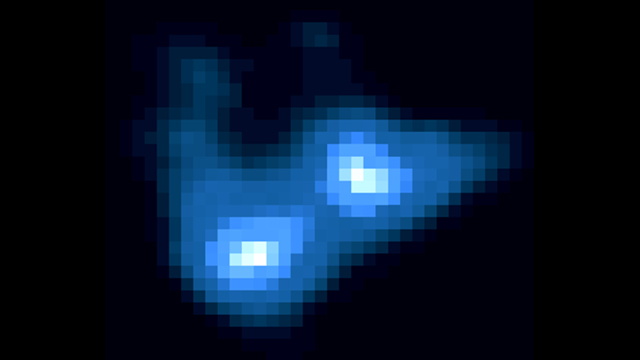
Somewhere out there, at the most distant reaches of space and time, a vast space-ocean with 140 trillion times more water than the drop that fills Earth's ocean basins is pouring down the drain of a super black hole, guzzled up and gone forever, forever, forever…. And I worry about wasting water every time I flush the toilet….
The whirlpool Jacuzzi in question is at the heart of a young galaxy 12 billion light years away. We know we're looking at a young galaxy because at that distance we are seeing the light that left it 12 billion years ago…and since the Universe itself is only 13.7 billion years old, you get the idea….
At this galaxy's core is quasar APM 08279+5255, an unimaginably powerful object whose engine of potential energy is a supermassive black hole containing some 20 billion solar masses, and whose radiant power—equivalent to about a quadrillion Suns (that's a thousand trillion smiley Sun faces)—is fueled by goo-gobs of gases falling into the young galaxy's core (1 goo-gob is equivalent to…well, a lot).
And what gases do we find swirling around this quasar? Well, mingled with the ubiquitous hydrogen and helium that you'd expect to find, astronomers have detected water, 140 trillion times the amount of water in Earth oceans—enough to supply an Earth-style ocean to all of the planets thought to exist in the Milky Way galaxy, 3000 times over!
Dizzy. Head spinning. Numbers too big. What are we talking about anyway, the National Debt?
